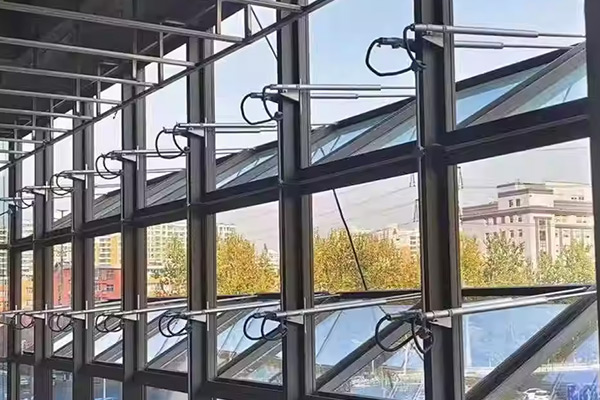Electric Lifting Columns: The Core Technology of Smart Desks
As technology rapidly advances, modern office environments are constantly evolving. Among these advancements, smart desks are increasingly becoming a favorite in offices due to their flexible, versatile, healthy, and eco-friendly characteristics. The core component driving all of this is the subject of today's article: the electric lifting column. It's not just crucial for adjusting desk height but also the very foundation of the smart desk's "intelligence."
Dissecting the Core Technologies of Electric Lifting Columns
While an electric lifting column might seem simple, it contains several core technologies:
1. High-Performance Motors and Transmission Systems
The motor is the "heart" of the electric lifting column; its performance directly determines the smoothness, speed, and noise level of the lifting action. Most electric lifting columns use DC or AC motors, converting the motor's rotational motion into linear motion through gears, lead screws, or belts.
Quiet Design: To provide a more comfortable office environment, many high-end columns feature noise optimization in their motors and transmission systems. This includes using low-noise gears and vibration-damping materials to keep operating noise at a low level.
Efficient Transmission: The efficiency of the transmission system directly impacts energy loss and lifting speed. An optimized transmission structure ensures efficient power transfer, reduces friction loss, and enhances the smoothness of the lift.
2. Precise Control Systems
The control system is the "brain" of the electric lifting column, responsible for receiving user commands and precisely controlling motor operation.
Microprocessor Control: Modern lifting columns often use integrated microprocessors to achieve precise speed control, stroke limits, and position memory functions.
Anti-Pinch and Collision Protection: To ensure user safety, smart desks typically integrate anti-pinch or collision protection functions. If an obstruction is encountered during lifting, the system can intelligently detect it and stop or reverse movement, preventing accidents.
Multi-Function Control Panel: Beyond basic up and down buttons, many control panels also include features like memory height settings, sedentary reminders, and LED displays, further enhancing the user experience.
3. Stable Structural Design and Material Selection
The structural design and material selection of the column are vital for its load-bearing capacity, stability, and service life.
Multi-Section Tube Design: Common lifting columns use two, three, or even more telescoping tube sections. Through nesting and guiding structures, they ensure stability and load-bearing capacity during lifting.
High-Strength Materials: High-strength materials like quality cold-rolled steel and aluminum alloy are widely used in column manufacturing to ensure they don't deform or wobble during long-term use.
Anti-Tilt Design: For stability during high-position use, some designs also incorporate wider bases or special structures to effectively prevent tilting.
4. Intelligence and IoT Integration
With the development of smart home and Internet of Things (IoT) technologies, electric lifting columns are also moving towards higher levels of intelligence.
APP Control: Users can control the desk's height remotely via a mobile app and even set personalized work modes.
Smart Interconnection: In the future, smart desks are expected to interconnect with smart lighting, smart temperature control, and other systems, creating a more integrated and human-centered smart office space.
Health Management Features: Some high-end products can even combine sensor data to remind users to adjust their posture or stand up and move, achieving more in-depth health management.
Conclusion
The electric lifting column, as the core technology of smart desks, has evolving technology that is profoundly changing our way of working. From simple electric lifting to intelligent systems integrating precise control, robust structures, and future IoT connectivity, it's not just about making desks move. It's about empowering us with a healthier, more efficient, and smarter office environment. As the technology matures further and costs continue to optimize, it's believed that electric lifting columns will become a standard feature of future desks, bringing a revolutionary work experience to more professionals.





